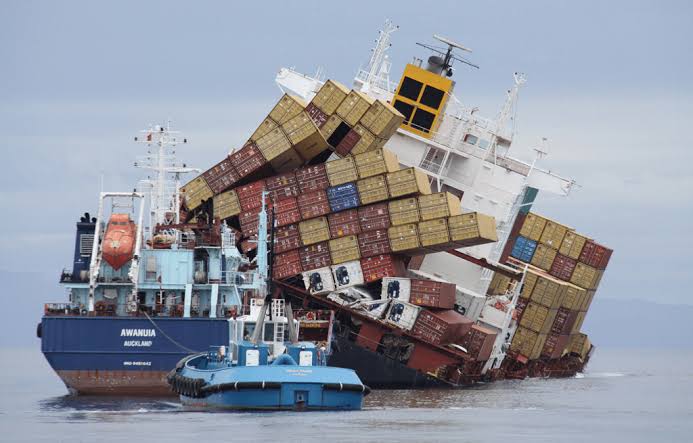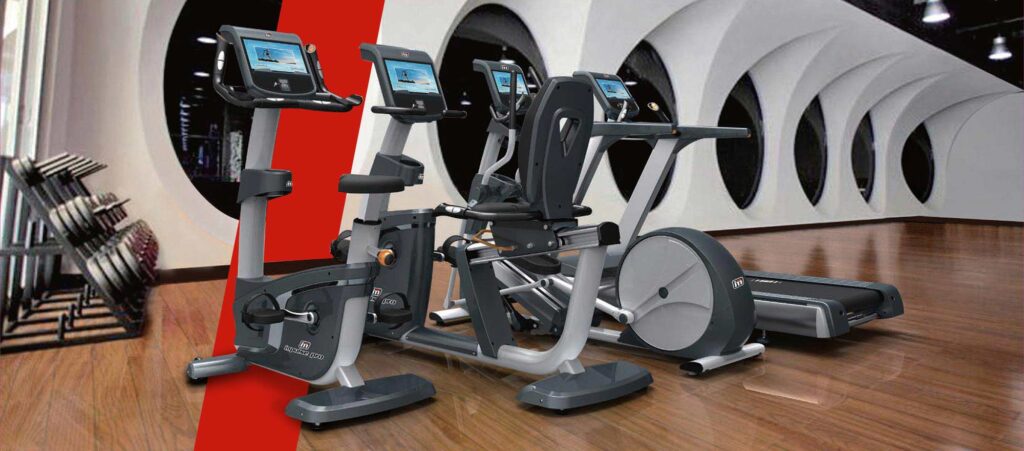Introduction
When considering transportation, the phrase “rena monrovia when you transport something by car …” brings to mind the meticulous planning and effort involved in securely moving items from one location to another. Transporting items by car may seem straightforward, but it requires thorough attention to detail, especially if you want to ensure the safety of the items, the vehicle, and the people involved. This process goes beyond simply loading items into your car and driving off—every step must be carefully planned, from the preparation to the unloading at the destination. In this article, we will dive deeply into the critical steps and considerations that must be taken when transporting anything by car. From the importance of preparation, loading, and securing the cargo, to the legal implications and future trends, this guide will cover it all.
Importance of Proper Transportation
Proper transportation is not only about ensuring that items reach their destination intact but also about minimizing risks to the driver, passengers, and other road users. When we talk about “rena monrovia when you transport something by car …“, it’s crucial to think about the implications of improper transportation. An unsecured or improperly packed load can shift during transit, potentially leading to damage or accidents. Imagine driving with a heavy object in your backseat that suddenly shifts during a sharp turn—it’s not only dangerous but could also damage your vehicle or injure the passengers.
Additionally, from a financial perspective, ensuring proper transportation can prevent unnecessary losses. If items are damaged during transit, the cost of repairs or replacements can add up quickly. Whether you’re transporting delicate electronics, bulky furniture, or valuable artwork, taking the time to properly prepare and transport these items can save you money and hassle in the long run.
Preparation for Transport
Preparation is the first and arguably the most important step when transporting items by car. If you don’t prepare adequately, you’re setting yourself up for potential disaster. Think of “rena monrovia when you transport something by car …”—this scenario requires the utmost attention to detail in terms of both the items being transported and the vehicle being used. The first step in preparation is assessing the suitability of your vehicle. Does it have enough space for the items? Is the weight of the items within the car’s load capacity? These are critical questions that need to be addressed before you even begin to load the vehicle.
Once you’ve confirmed that your vehicle is suitable for the load, you must prepare the items for transport. This can involve wrapping delicate items in protective materials like bubble wrap or blankets and securing heavier objects with straps or bungee cords. The goal is to ensure that nothing moves around during transit, which could cause damage to the items or, worse, create a hazard for the driver. Additionally, it’s important to have a plan for how the items will be unloaded once you reach your destination. Being unprepared at the end of the journey can result in hasty, unsafe unloading, which could undo all the careful work you put into loading and transporting the items.
Loading Techniques
When it comes to loading your vehicle, there is much more to it than simply placing items inside. In fact, improper loading is one of the most common causes of damage during transport. “Rena monrovia when you transport something by car …” highlights the need for careful planning when loading items into a vehicle. The key is to distribute the weight evenly across the car to avoid overloading one side or putting too much pressure on the tires. This not only ensures the safety of the items but also keeps the car stable and easy to control.
For heavier or bulkier items, it’s wise to position them closer to the center of the vehicle, ideally low to the ground. This helps to maintain a low center of gravity, which makes the car more stable during turns or sudden stops. Additionally, using loading aids such as ramps, dollies, or lifting straps can make the process smoother and reduce the risk of injury. When loading multiple items, always place the heaviest items at the bottom and the lighter, more delicate ones on top. This arrangement prevents the heavier items from crushing the more fragile ones during transit.
Securing the Load
Once the vehicle is loaded, the next critical step is to secure the items in place. A failure to properly secure your load can lead to disastrous results, both for the items you’re transporting and for the safety of everyone on the road. The phrase “rena monrovia when you transport something by car …” emphasizes the importance of securing your load to prevent movement during the journey. This involves using the right materials, such as straps, ropes, or bungee cords, to tie down items and prevent them from shifting.
When securing the load, you should ensure that all items are tightly bound and that nothing is loose or left unsupported. Even small items can become dangerous projectiles in the event of sudden braking or a collision. Additionally, it’s important to check your load periodically throughout the journey, especially on long trips. You should stop every so often to ensure that everything remains securely in place and adjust the securing materials as needed. A few minutes of precautionary checks can save you a lot of trouble and potential accidents later.
During the Transport
Now that your vehicle is properly loaded and the cargo is secured, it’s time to hit the road. But your responsibility doesn’t end once you start driving. “Rena monrovia when you transport something by car …” reminds us that monitoring the load throughout the journey is crucial. As you drive, you need to be aware of any changes in how the vehicle handles. If the car feels heavier on one side or the steering becomes more difficult, it could indicate that the load has shifted.
Additionally, keep an eye on the road for any bumps or potholes, as these can cause items to move or become dislodged. It’s also important to drive carefully and avoid sudden stops or sharp turns, which can increase the risk of items shifting. Regularly check the rearview mirror to ensure that nothing appears out of place in the back of the vehicle. If something does seem off, pull over to a safe location and inspect the load to make sure everything is still secure.
Unloading Techniques
Unloading is the final step in the transportation process, but it’s one that should not be rushed. “Rena monrovia when you transport something by car …” emphasizes the importance of carefully unloading items to prevent damage or injury. When unloading, start with the lighter items on top and work your way down to the heavier ones. Be sure to have a plan for where each item will go once it’s removed from the vehicle, as this will prevent confusion and reduce the risk of items being dropped or damaged.
For heavier or bulkier items, consider using unloading aids such as dollies or ramps. These tools make it easier to move heavy items without straining your back or risking injury. If you’re unloading in a busy area or in traffic, make sure to position your vehicle in a safe location where you won’t be obstructing other drivers or pedestrians. Unloading should be done methodically and with care, just as with loading.
Post-Transport Care
After the transport is complete and the items have been safely unloaded, it’s time to assess the condition of both the cargo and the vehicle. “Rena monrovia when you transport something by car …” highlights the importance of inspecting your items after transport to ensure that no damage occurred during the journey. This is particularly important if you were transporting valuable or fragile items, as even small bumps or shifts during transit could result in damage.
If any damage is discovered, it’s important to document it immediately and take appropriate action. This may involve filing a claim with your insurance or contacting the company responsible for the transport if you hired someone to do it. Additionally, it’s a good idea to inspect your vehicle for any signs of wear and tear caused by the transport. Regular maintenance of your car’s suspension, tires, and brakes is essential when frequently transporting heavy loads.

Common Challenges and Solutions
When transporting items by car, especially in a scenario like “rena monrovia when you transport something by car …”, there are several challenges that you may encounter. These include poor weather conditions, mechanical issues with your vehicle, or unexpected delays on the road. One of the best ways to overcome these challenges is to be prepared. Always check the weather forecast before setting out on a long trip, and make sure your vehicle is in good working order by checking the tires, brakes, and fluid levels.
If you encounter a mechanical issue or a flat tire, it’s important to have an emergency kit in your vehicle that includes essential tools such as a jack, spare tire, and jumper cables. Additionally, knowing how to handle unexpected delays—such as road closures or traffic jams—can make the journey less stressful. Planning alternative routes and allowing for extra time in your schedule can help you avoid unnecessary frustration and ensure a smoother transport experience.
Legal and Regulatory Considerations
When discussing “rena monrovia when you transport something by car …”, it’s important to understand the legal implications of transporting items by car. Depending on the size, weight, and nature of the items being transported, there may be specific regulations you need to follow. For example, oversized loads may require special permits, and certain items—such as hazardous materials—may be subject to strict regulations regarding how they are transported.
It’s crucial to be aware of these regulations and ensure that you are in compliance with them to avoid fines or legal issues. Additionally, make sure your vehicle’s insurance policy covers the items being transported, especially if they are of high value. Failing to comply with legal requirements can lead to costly penalties and even jeopardize your ability to transport items in the future.
Case Studies
The phrase “rena monrovia when you transport something by car …” brings to mind various real-world scenarios where careful planning and execution were key to success. Consider a case where a business had to transport delicate, high-value artwork over a long distance. The company invested in high-quality protective materials and used a professional transport service to ensure the artwork remained safe throughout the journey. As a result, the artwork arrived at its destination without a single scratch.
On the other hand, there are instances where lack of preparation led to disaster. In one case, a homeowner transporting heavy furniture failed to secure the load properly. During transit, the furniture shifted, causing damage to both the items and the interior of the vehicle. This example highlights the importance of following best practices for securing loads and monitoring them during the journey.
Expert Opinions
Experts in the field of transportation emphasize the importance of proper planning, especially in situations like “rena monrovia when you transport something by car …”. According to industry professionals, the most common mistake people make when transporting items by car is underestimating the importance of securing the load. Even short trips can result in significant damage if the items are not properly secured, and long-distance journeys require even more careful planning and attention to detail.
Additionally, experts recommend investing in high-quality transport equipment, such as heavy-duty straps and padding, to protect both your items and your vehicle. In the long run, these investments can save you money by preventing damage and reducing the likelihood of accidents.
Future Trends in Transportation
Looking ahead, the transportation industry is expected to undergo significant changes, particularly in the realm of technology. When thinking about “rena monrovia when you transport something by car …”, it’s exciting to consider how advancements such as automated vehicles, real-time tracking systems, and enhanced safety features will impact the way we transport items. These innovations promise to make transportation more efficient and safer, both for individuals and businesses.
For instance, self-driving cars could revolutionize the transportation of goods by reducing the risk of human error, while real-time tracking systems will allow transporters to monitor their loads more closely and respond to any issues immediately. As technology continues to evolve, it will be interesting to see how these changes shape the future of transportation.
Resources and Further Reading
For those interested in learning more about “rena monrovia when you transport something by car …” and the best practices for safe and efficient transportation, there are numerous resources available. Books such as The Complete Guide to Vehicle Transport and Safe Transportation of Goods provide in-depth information on the subject. Additionally, websites like TransportSafety.com and CarLoaders.net offer valuable tips and advice for both amateur and professional transporters.
For those looking to stay up-to-date with the latest trends in transportation, subscribing to industry blogs and attending webinars hosted by transportation experts can be incredibly beneficial. These resources will not only help you improve your skills but also keep you informed about any changes in regulations or best practices.
Conclusion
Transporting items by car, especially in a context like “rena monrovia when you transport something by car …“, requires careful planning, attention to detail, and a commitment to safety. From the initial preparation and loading process to securing the load, monitoring during transit, and safely unloading at the destination, every step is crucial to ensuring a successful transport experience. By following the guidelines and best practices outlined in this article, you can avoid common pitfalls, protect your items, and ensure a smooth and stress-free transport experience.
FAQs
What are the first steps to take when preparing for “rena monrovia when you transport something by car …”?
- Start by assessing the suitability of your vehicle and preparing the items with appropriate protective materials.
How do you ensure that your load remains secure during transportation?
- Use high-quality securing materials like straps and bungee cords, and make periodic stops to check the stability of the load.
What are the legal implications of improper transportation in scenarios like “rena monrovia when you transport something by car …”?
- Depending on the type of cargo, you may face fines or penalties for failing to comply with local transportation regulations.
Can technological advancements help with transportation?
- Yes, advancements such as automated vehicles and real-time tracking systems are expected to make transportation safer and more efficient.
What should you do if damage occurs during transport?
- Document the damage, contact your insurance provider if necessary, and take steps to prevent similar incidents in the future.




